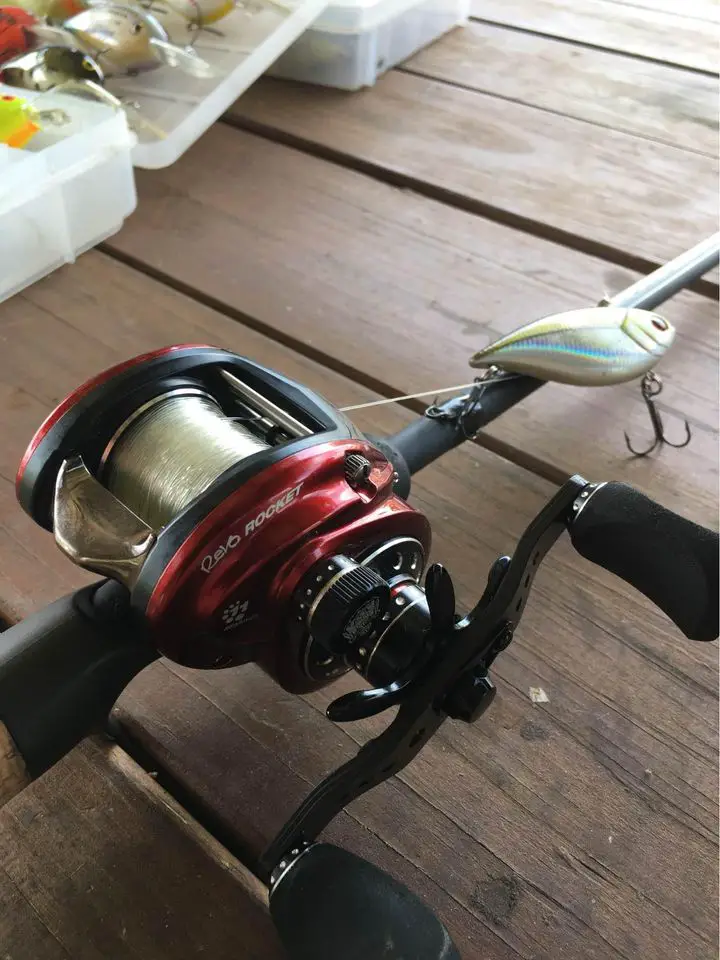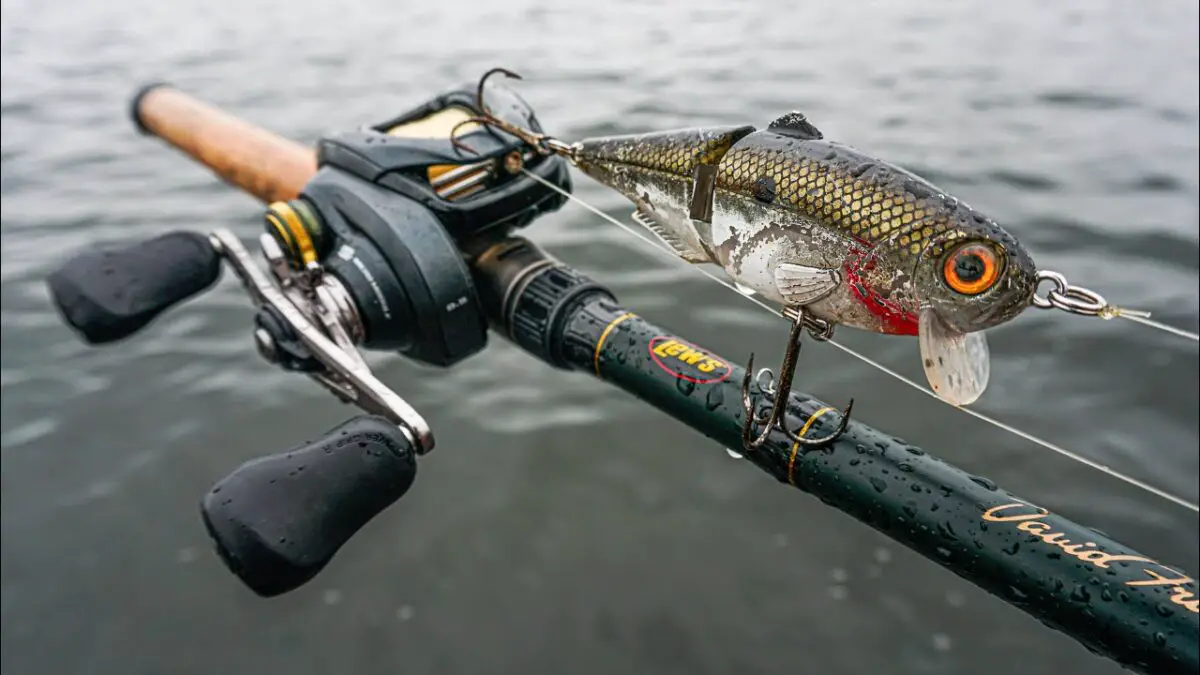You can use a baitcaster in saltwater, provided it’s designed for saltwater fishing. Saltwater baitcasting reels are made with corrosion-resistant materials to withstand the harsh marine environment. However, not all baitcasters are equal and knowing what to look for is crucial.

Table of Contents
Saltwater Ready Materials
There’s a unique thrill in challenging the ocean’s vastness with your baitcasting reel. Saltwater fishing pushes not just the angler but also the fishing gear to its limits. The best offense against saltwater’s corrosive nature? A strong defense in the form of saltwater-ready materials. These are materials designed to withstand the ravages of saltwater and keep your reel functioning smoothly, cast after cast.
Stainless Steel Ball Bearings
One of the critical components of any baitcasting reels saltwater angler should look for are stainless steel ball bearings. For those unaware, the ball bearings in a reel facilitate smooth casting and reeling by reducing friction between moving parts. The type of material they’re made of can be a game changer.
These ball bearings are often the first casualties in saltwater environments if they’re not up to the mark. Saltwater can be extremely corrosive, and not all materials can hold their own against it.
This is where stainless steel ball bearings come into play. Their durability and corrosion resistance make them a must for saltwater baitcasting. I learned this hard during one of my early inshore fishing expeditions. I had a reel that I assumed contained stainless steel ball bearings.
How wrong I was!
After a few months of saltwater exposure, the reel was barely usable – the bearings had corroded, and casting had become a herculean task. Since then, I make sure to confirm the ball bearings are stainless steel before purchasing any reel for saltwater fishing.

Corrosion-Resistant Housing
The housing of a reel is what keeps its delicate internal components safe. The hard exterior faces the brunt of the environmental conditions, whether it’s being splashed by saltwater or exposed to the seaside air.
When choosing a baitcaster reel for saltwater, a corrosion-resistant housing is essential. The materials I prefer for this task are anodized aluminum or graphite. Both these materials offer great corrosion resistance, ensuring the inner workings of your reel stay safe and dry.
I fondly remember my first saltwater-ready baitcaster reel. It was made of anodized aluminum and served me well through many fishing adventures. Even after lengthy exposure to saltwater, the housing remained unscathed, proof of the resilience of these materials.
Shielded vs Sealed Drag System
The drag system of a reel is like its heart. It allows you to fight those larger, feistier fish without your line snapping. There are typically two types of drag systems for baitcasting reels – shielded and sealed.
A shielded drag system has a certain level of protection against water and debris but isn’t entirely impervious. On the other hand, a sealed drag system is completely protected from outside elements, including saltwater.
From my countless fishing trips, one lesson stands out – a sealed drag system is superior to saltwater fishing. It simply offers protection that a shielded system can’t match. With a sealed system, you’re safe knowing saltwater won’t seep in and cause damage.
I recall when I decided to test this theory and used a reel with a shielded drag system for saltwater fishing. Well, let’s say it didn’t end well. After several uses, I noticed the drag system had lost its smoothness. Saltwater had infiltrated and caused damage. Now, I ensure that my saltwater reels have a sealed drag system – an investment that has paid off over the years.
What to Look for that Isn’t Suitable for Saltwater
Saltwater is a harsh and unforgiving environment. As a result, not all baitcasting reels are up to the task of saltwater fishing. While it may seem daunting to sift through the specs of numerous baitcasting reels, a few key indicators can help you determine if a reel isn’t suitable for saltwater.
Firstly, pay close attention to the materials used in the construction of the reel. If you come across terms like “chromed steel” or “bronze” in the description, proceed cautiously. While fine for freshwater or occasional use, these materials are more susceptible to saltwater corrosion. My early days of fishing taught me that the hard way. A gorgeous chromed steel baitcaster I was incredibly proud of was no match for the saltwater and deteriorated faster than I could have imagined.
Secondly, take note of the drag system. If the specifications do not explicitly mention a ‘sealed’ drag system, it’s another warning sign. A sealed drag system is one of the essential features of a saltwater baitcasting reel as it prevents the corrosive saltwater from damaging its internal mechanism.

What Happens If You Use a Freshwater Reel in Saltwater
While it’s possible to use a freshwater reel in saltwater, it’s not something I would recommend. The difference between freshwater reels and saltwater baitcasting reels is significant. Freshwater reels are designed for a much less corrosive environment and hence do not possess the necessary protection against saltwater’s corrosive properties.
Allow me to share a personal experience. In my early angling days, I decided to take my favorite freshwater baitcaster on a saltwater trip.
I thought, “How bad could it be?” The answer was, quite bad.
After only a few outings, my once smooth and reliable reel became stiff, the drag system became sticky, and it was nearly unusable overall. It was a stark reminder that saltwater and freshwater gear are not interchangeable.
Flush with Freshwater After Use
As with many things in life, prevention is better than cure. This principle holds true for maintaining the longevity and performance of your saltwater baitcasting reels. Even with all the saltwater-resistant features, proper aftercare can significantly extend your reel’s lifespan.
After every saltwater fishing trip, I religiously flush my reels with freshwater. This simple act washes away the salt and other debris that might have gotten into the reel during the trip.
Popular Saltwater Ready Baitcasting Reels
| Reel Name | Material | Bearings | Drag System |
|---|---|---|---|
| Abu Garcia Revo Inshore Baitcasting Reel | Anodized Aluminum | Stainless Steel | Sealed |
| Penn Squall LevelWind | Graphite | Stainless Steel | Sealed |
| Shimano Tranx LowProfile Baitcasting Reel | Anodized Aluminum | Stainless Steel | Shielded |
| Daiwa Coastal TWS T-Wing Reel | Anodized Aluminum | Stainless Steel | Sealed |
| KastKing Rover Round Baitcasting Reel | Anodized Aluminum | Stainless Steel | Sealed |
| Okuma Cedros CJX Series Baitcasting Reels | Graphite | Stainless Steel | Sealed |
| Lew’s Inshore Speed Spool LFS Baitcasting Reel | Graphite | Stainless Steel | Sealed |
| Quantum Accurist S3 PT Saltwater Baitcasting Reel | Anodized Aluminum | Stainless Steel | Sealed |
| Piscifun Alijoz Size 300 Baitcasting Reels | Anodized Aluminum | Stainless Steel | Sealed |
| 13 Fishing Concept TXZ Baitcasting Reel | Graphite | Stainless Steel | Sealed |
Conclusion
So, can you use a baitcaster in saltwater? Definitely yes, but make sure it’s up to the task. Saltwater fishing is a different beast requiring gear to withstand its challenges. When choosing a baitcaster reel, look for stainless steel bearings, corrosion-resistant housing, and a sealed drag system.
And remember, no matter how robust your reel is, always flush it with freshwater after use to keep it performing at its best.
